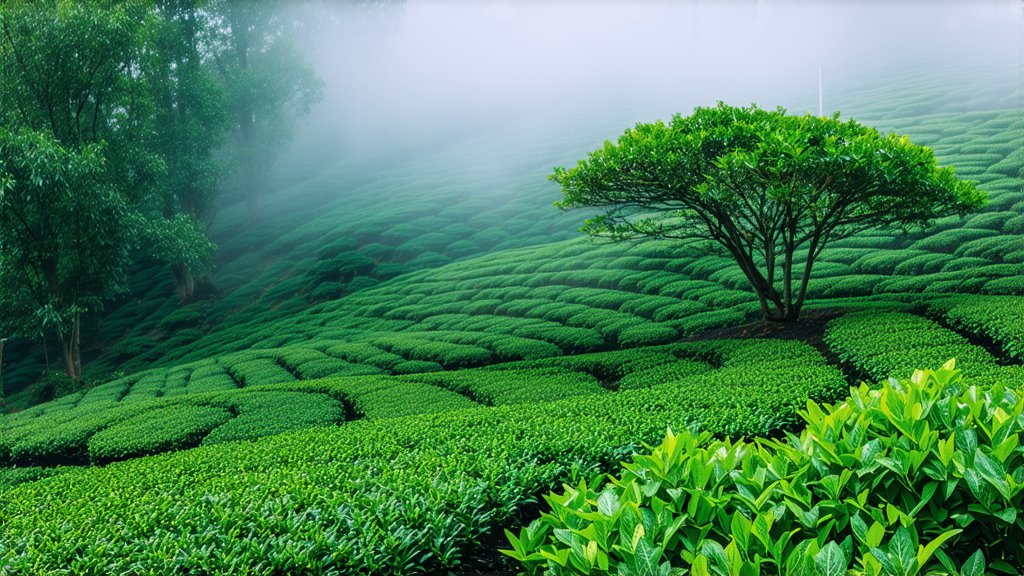
In the vast and diverse landscape of Chinese tea culture, one variety stands out for its unique flavor profile, historical significance, and meticulous craftsmanship – Longjing, also known as Dragon Well tea. Originating from the picturesque hills surrounding West Lake in Hangzhou, Zhejiang Province, Longjing has been cherished for centuries as a symbol of purity, elegance, and the art of tea making. This article embarks on a journey to explore the depths of this revered green tea, delving into its storied past, distinctive varieties, intricate processing methods, and the nuanced art of its appreciation.
A Glimpse into History
The legend of Longjing tea traces back over a thousand years, intertwining with the annals of Chinese history. Its name, "Dragon Well," is derived from a well situated near the tea plantations, which was believed to be the dwelling place of dragons – mythical creatures revered in Chinese folklore. According to local tales, during the Tang Dynasty (618-907 AD), a venerable monk discovered the therapeutic properties of these tea leaves and began cultivating them. However, it was not until the Qing Dynasty (1644-1912) that Longjing truly gained prominence when Emperor Kangxi proclaimed it the "Imperial Tea." Since then, it has been synonymous with luxury and refinement.
Varieties of Longjing
Longjing tea comes in several grades, each distinguished by its appearance, taste, and aroma. The finest among them is the Xi Hu Long Jing, or West Lake Dragon Well, grown in the core production area around West Lake. These leaves are characterized by their flat shape, resembling the blades of a sword, and a vibrant emerald hue. Other notable varieties include Meijiawu Long Jing and Shi Feng Long Jing, both originating from nearby villages and bearing slight variations in flavor and texture due to their specific terroir.
The Art of Craftsmanship
The magic of Longjing lies not only in its origin but also in the meticulous process by which it is crafted. Harvesting typically occurs in early spring when the tender buds and leaves are at their peak freshness. The traditional method involves several stages:
- Picking: Only the top one or two leaves and the bud are handpicked, ensuring the highest quality.
- Withering: Freshly picked leaves are spread thinly to undergo natural withering under controlled conditions, reducing moisture content.
- Fixation: This crucial step involves pan-frying the leaves in large woks over high heat to halt oxidation and preserve their green color. Skilled artisans constantly toss and turn the leaves to ensure even heating.
- Shaping: After fixation, the leaves are shaped into their characteristic flat form through a combination of pressing and rolling techniques.
- Drying: Finally, the shaped leaves are dried thoroughly to remove any remaining moisture, enhancing their crispness and shelf life.
Savoring the Essence
To truly appreciate Longjing tea, one must engage in the ritual of Gongfu Cha, a traditional Chinese tea ceremony that emphasizes mindfulness and respect for the tea. Here’s how to savor this exquisite brew:
- Preparation: Use a transparent glass or a Yixing clay teapot to observe the unfurling leaves. Boil water to approximately 80°C (176°F) to avoid burning the delicate leaves.
- Infusion: Place 3-5 grams of Longjing per 150ml of water. Steep for about 1-2 minutes for the first infusion, adjusting steeping time for subsequent infusions.
- Observation: Watch as the leaves dance gracefully in the water, transforming from a tight coil into a full leaf. Appreciate the light golden hue of the liquor.
- Aroma: Inhale deeply to detect subtle floral and chestnut notes, a hallmark of Longjing's allure.
- Tasting: Sip slowly, allowing the tea to coat your palate. Notice the initial sweetness followed by a mild bitterness, which quickly mellows into a refreshing aftertaste.
Conclusion
Longjing tea embodies the essence of Chinese tea culture – a harmonious blend of nature's bounty and human artistry. From its ancient roots to its modern-day popularity, this green elixir continues to captivate tea enthusiasts worldwide with its delicate flavors and profound history. As you embark on your own journey exploring Longjing, whether through a quiet moment of reflection or a shared experience with friends, its timeless elegance promises to leave an indelible impression on your senses and soul.